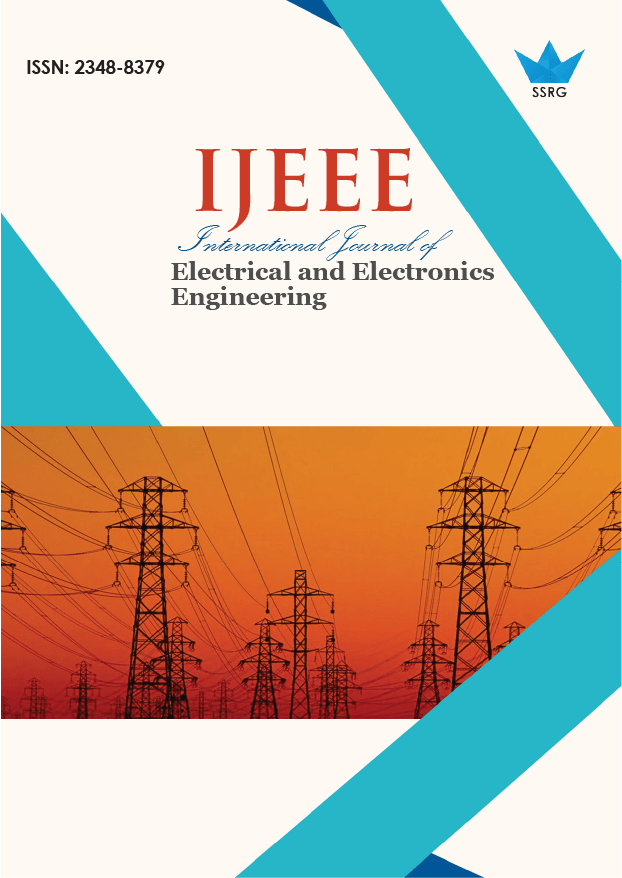Enhancing Power Grid Stability through Reactive Power Demand Forecasting Using Deep Learning

| International Journal of Electrical and Electronics Engineering |
| © 2024 by SSRG - IJEEE Journal |
| Volume 11 Issue 12 |
| Year of Publication : 2024 |
| Authors : Diaa Salman, Abdirahman Farah Ali, Suleiman Abdullahi Ali, Abdullahi Sheikh Mohamed |
How to Cite?
Diaa Salman, Abdirahman Farah Ali, Suleiman Abdullahi Ali, Abdullahi Sheikh Mohamed, "Enhancing Power Grid Stability through Reactive Power Demand Forecasting Using Deep Learning," SSRG International Journal of Electrical and Electronics Engineering, vol. 11, no. 12, pp. 170-185, 2024. Crossref, https://doi.org/10.14445/23488379/IJEEE-V11I12P116
Abstract:
This paper examines deep learning models for reactive power forecasting in contemporary power systems, emphasizing the Temporal Convolutional Network (TCN), the Transformer, and the models that use both TCN and the Transformer. Reactive power plays a critical role in the stability of power grids, and this paper presents TCN and Transformer models to enhance the forecasting precision of this parameter. Four models, including TCN, Transformer, TCN-Transformer, and Transformer-TCN, were trained and tested based on performance indicators such as Mean Absolute Error (MAE), Mean Squared Error (MSE), and Root Mean Squared Error (RMSE). Among all the models, the Transformer-TCN hybrid model achieved the best results in all the metrics and successfully learned the short-term and long-term dependencies in the data. The results of the hybrid models were superior to the single models, and the accuracy and stability were improved. The model was validated by checking residual plots and error distributions, and most errors were observed near zero. There were still some prediction challenges in extreme cases, while the Transformer-TCN model was the most accurate for most cases among the architectures analyzed. This work focuses on the prospect of deep learning models for reactive power forecasting and offers a useful tool for managing the power grid. Other research could be directed towards further optimizing hybrid architectures and other methods for enhancing predictive capability in power systems.
Keywords:
Power systems, Prediction, Deep Learning, Hybrid models, Reactive power.
References:
[1] Amir Sepehr, Oriol Gomis-Bellmunt, and Edris Pouresmaeill, “Employing Machine Learning for Enhancing Transient Stability of Power Synchronization Control During Fault Conditions in Weak Grids,” IEEE Transactions on Smart Grid, vol. 13, no. 3, pp. 2121-2131, 2022.
[CrossRef] [Google Scholar] [Publisher Link]
[2] Wenping Qin et al., “Reactive Power Aspects in Reliability Assessment of Power Systems,” IEEE Transactions Power System, vol. 26, no. 1, pp. 85-92, 2011.
[CrossRef] [Google Scholar] [Publisher Link]
[3] Iván Andrade et al., “An Active/Reactive Power Control Strategy for Renewable,” Electronics, vol. 10, no. 9, pp. 1-19, 2021.
[CrossRef] [Google Scholar] [Publisher Link]
[4] Antonio Bracale et al., “Short-Term Industrial Reactive Power Forecasting,” International Journal of Electrical Power & Energy Systems, vol. 107, pp. 177-185, 2019.
[CrossRef] [Google Scholar] [Publisher Link]
[5] Jinling Lu et al., “Two-Tier Reactive Power and Voltage Control Strategy Based on Arma Renewable Power Forecasting Models,” Energies, vol. 10, no. 10, pp. 1-13, 2017.
[CrossRef] [Google Scholar] [Publisher Link]
[6] Ahmad Rofii et al., “Utilize the Prediction Results from the Neural Network Gate Recurrent Unit (GRU) Model to Optimize Reactive Power Usage in High-Rise Buildings,” International Journal of Robotics & Control Systems, vol. 4, no. 2, pp. 628-654, 2024.
[CrossRef] [Google Scholar] [Publisher Link]
[7] Mohamed Massaoudi et al., “Fast Transient Stability Assessment of Power Systems Using Optimized Temporal Convolutional Networks,” IEEE Open Journal of Industry Applications, vol. 5, pp. 267-282, 2024.
[CrossRef] [Google Scholar] [Publisher Link]
[8] Sami Ullah et al., “Development of a CNN-based Time-Varying Reactive Power Forecast Model for Power systems,” 2022 International Conference on Recent Advances in Electrical Engineering & Computer Sciences (RAEE & CS), Islamabad, Pakistan, pp. 1-7, 2022.
[CrossRef] [Google Scholar] [Publisher Link]
[9] Hatice Vildan Dudukcu et al., “Temporal Convolutional Networks with RNN Approach for Chaotic Time Series Prediction,” Applied Soft Computing, vol. 133, 2023.
[CrossRef] [Google Scholar] [Publisher Link]
[10] Huiling Chen et al., "Early Time Series Classification Using TCN-Transformer,” 2022 IEEE 4th International Conference on Civil Aviation Safety and Information Technology (ICCASIT), Dali, China, pp. 1079-1082, 2022.
[CrossRef] [Google Scholar] [Publisher Link]
[11] Xiaoyan Tian, Ye Jin, and Xianglong Tang, “TSRN: Two-Stage Refinement Network for Temporal Action Segmentation,” Pattern Analysis and Applications, vol. 26, no. 3, pp. 1375-1393, 2023.
[CrossRef] [Google Scholar] [Publisher Link]
[12] Olof Almqvist, “A comparative study between algorithms for time series forecasting on customer prediction: An investigation into the performance of ARIMA, RNN, LSTM, TCN and HMM, University of Skövde, School of Informatics, Student Thesis, 2019.
[Google Scholar] [Publisher Link]
[13] Shilin Sun et al., “Short-Term Multi-Step Wind Power Forecasting Based on Spatio-Temporal Correlations and Transformer Neural Networks,” Energy Conversion and Management, vol. 283, 2023.
[CrossRef] [Google Scholar] [Publisher Link]
[14] Shaojie Bai, J. Zico Kolter, and Vladlen Koltun, “An Empirical Evaluation of Generic Convolutional and Recurrent Networks for Sequence Modeling,” arXiv preprint, 2018.
[CrossRef] [Google Scholar] [Publisher Link]
[15] André Veltman, Duco W. J. Pulle, and R. W. De Doncker, The Transformer, Power Systems, Springer, Cham, pp. 47-82, 2017.
[CrossRef] [Google Scholar] [Publisher Link]
[16] Guokun Lai et al., "Modeling Long- and Short-Term Temporal Patterns with Deep Neural Networks,” SIGIR '18: The 41st International ACM SIGIR Conference on Research & Development in Information Retrieval, New York, United States, pp. 95-104, 2018.
[CrossRef] [Google Scholar] [Publisher Link]
[17] Gülizar Gizem Tolun, and Kasım Zor, “Very Short-Term Reactive Power Forecasting Using Machine Learning-Based Algorithms,” 2024 9th International Youth Conference on Energy (IYCE), Colmar, France, 2024.
[CrossRef] [Google Scholar] [Publisher Link]
[18] Renzhuo Wan et al., “Multivariate Temporal Convolutional Network: A Deep Neural Networks Approach for Multivariate Time Series Forecasting,” Electronics, vol. 8, no. 8, 2019.
[CrossRef] [Google Scholar] [Publisher Link]
[19] Heng Yuan et al., “Vehicle Trajectory Prediction Based on Posterior Distributions Fitting and TCN-Transformer,” IEEE Transactions on Transportation Electrification, vol. 10, no. 3, pp. 7160-7173, 2023.
[CrossRef] [Google Scholar] [Publisher Link]
[20] Georges Hebrail, and Alice Berard, “Individual Household Electric Power Consumption,” UCI Machine Learning Repository, 2006.
[CrossRef] [Google Scholar] [Publisher Link]

 10.14445/23488379/IJEEE-V11I12P116
10.14445/23488379/IJEEE-V11I12P116